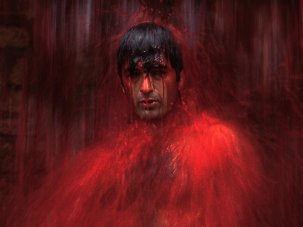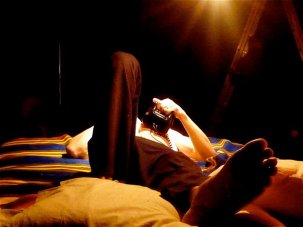Web exclusive
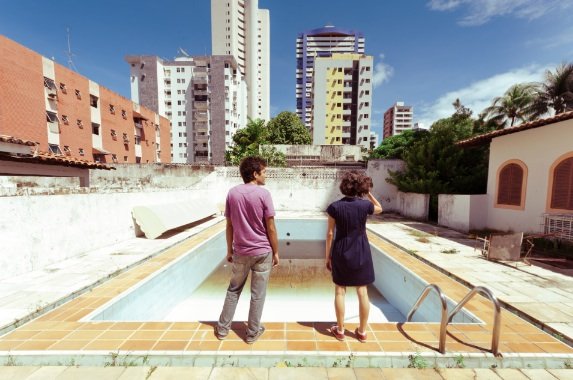
The most homicide-heavy of Brazil’s state capitals, the northeastern city of Recife is home to former film critic Kleber Mendonça Filho, and is the setting of his innovative, assured first fiction feature Neighbouring Sounds, which has won strong critical praise since premiering at last year’s Rotterdam Film Festival. Infused with a creeping sense of paranoia, the film sees a gang of private security guards appear offering protection to a middle-class neighbourhood under swift development with high-rise apartment blocks. Their enterprise is eyed warily by ageing patriarch Francisco, a former plantation-owner who owns most of the property.
An early scene finds Francisco’s grandson and property agent Joao showing a condominium to a potential buyer, who’s put off by the last tenant having jumped to her death from the balcony. Joao denies the space is haunted – but the past proves imprinted on the neighbourhood in all manner of ways. Framing its spaces in ’Scope, the film shows how fear and social division are embedded in the architectural design, from the high perimeter walls to the stuffy, windowless maid’s room. The titles of the film’s three sections – ‘Guard Dogs’, ‘Night Guards’ and ‘Bodyguards’ – suggest lives defined by a reliance on escalating pre-emption.
The absurdist horror of class-based urban living is captured, as well-off residents must offer access to their private spaces to the maids, guards and delivery people they oppress to serve their needs, employing stringent stratifying measures to counteract this ‘invasion’. Small, subtle moments of unspoken tension speak volumes, such as when Joao arrives home to find the maid’s son sprawled out on the sofa, exhausted from a night-shift.
Filho offered the following insights on noise composition, bad architecture and casting for racial realism when in town for the screening of Neighbouring Sounds at the London Film Festival.
You shot in your neighbourhood in Recife. There’s a creeping sense of dread associated with the security guards who’ve ostensibly been brought in for protection. What inspired you to make a film about that?
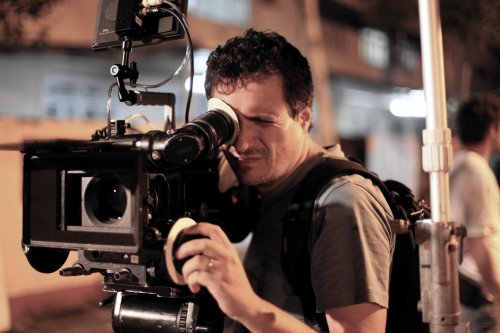
Kleber Mendonça Filho
I’m really interested in what I call artistic portraits – a depiction of reality with an artistic twist, from a personal point of view. There’s a lot of urban fear of violence in Brazil. It’s a paralysing fear that we all feel in the big cities, and for me it’s very attractive in terms of telling and photographing a story, because fear of course is a very important part of cinema – genre cinema and suspense. I was really interested in experimenting. Sometimes I would put the camera slightly to the left or slightly lower than you’d expect, and that generates tension.
I thought about the John Carpenter films I grew up with. The first half-hour of Halloween – as well as introducing the characters – is just dedicated to showing what the neighbourhood looks like, with wide open shots and pan vision. It’s a very realistic American neighbourhood from the 70s. Neighbouring Sounds takes place in a lot of people’s kitchens, living rooms and bedrooms, and I wanted them to look very real, without props or special production design bits and pieces.
You use space quite uniquely – it feels haunted as the camera creeps through it. The film seems to be less about plot than about an architecture of suspense.
Bad architecture creates tension, because it’s always imposing lines, divisions and limits, a maze of confusion. The designer can make you do unnatural things. The very high perimeter walls that each new tower has, for example, are oppressive because you feel so small. It makes you feel silly walking on the street. It’s like you’re walking next to a federal prison, but it’s just somebody’s home.
A place like that photographs very well – and because it’s where I live I’ve been photographing that neighbourhood since the mid-90s. I made three shorts there, so I already had my favourite angles for shooting, especially with ideas related to how inhuman architecture can be.
So it’s almost like the residents are entrapped.
Of course, but the bizarre thing is they’re only realising it now the film is showing in Brazil. You only see how absurd this way of living is when you frame it and put it in a film. It’s very funny that when Francesco goes for a midnight swim the light sensors in every building switch on when he steps on the pavement. That always made me feel kind of privileged, like the lights were coming on just for me, like a prince or Michael Jackson in the Billie Jean video. Of course it’s ironic because he is the king of the hill, but it’s just a security device set up basically to accuse people and let them know they’re seen.
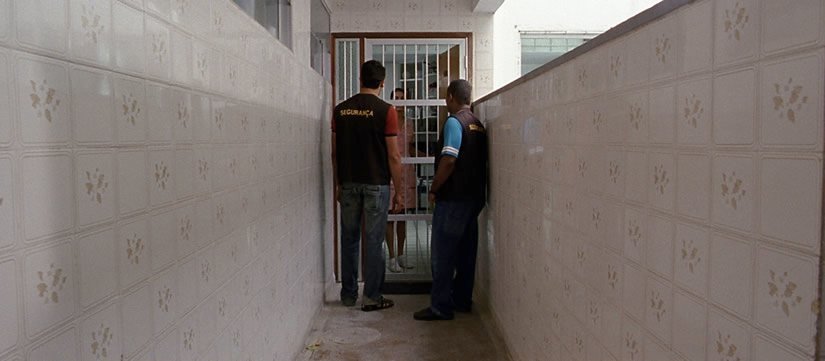
Would you say Brazil is a high-surveillance culture?
Yes, and a high-surveillance industry, because a lot of people make money out of this. It’s a universal concern, but in Brazil it’s intense and absurd to the point of Jacques Tati. It’s paralysing. I once went to buy bread with my wife and this extremely paranoid neighbour saw us and wanted to drive us back the 300 yards, because it was 8pm, saying we shouldn’t walk.
Race and class tensions are palpable. Were you wanting to comment on the state of Brazilian society post-Lula?
Lula’s eight years as president had an impact on the lower classes. Because he came from the working class, from the poor northeast, he didn’t really fit the mould of the standard Brazilian president. He’s so original and natural in the way he speaks, there’s no bullshit. The lower classes gained more respect – and self-respect.
That probably explains why every single lower-class character in the film is very reactive. Traditionally, Brazilians understand that the lower classes lower their heads too much. They don’t despise the rich, they want to be like the rich. It’s different in Britain. I think George Bernard Shaw wrote [in Pygmalion] it’s impossible for an Englishman to open his mouth without making another Englishman despise or hate him. It’s not like that in Brazil.
What about the rich’s take on the poor?
Contempt. Like in the film – they patronise and despise them. I hope it’s not wishful thinking, I think it’s true that I’ve been noticing an improvement in how the lower classes behave and see themselves. It’s in the film, although I think some of it might be poetic license.
Does this newfound lower-class confidence feed into the fear? Do the rich feel threatened, and think “what if they start wanting to overthrow us?”?
That’s more dramatic than what’s happening in real life, but I have observed some very nasty scenes which could only happen in the new Brazil, amid this new globalisation. Someone told me that about this rich housewife who was disturbed that her maid had an iPhone – she thought she was the one who was supposed to have an iPhone, and the maids were meant to have shitty little phones.
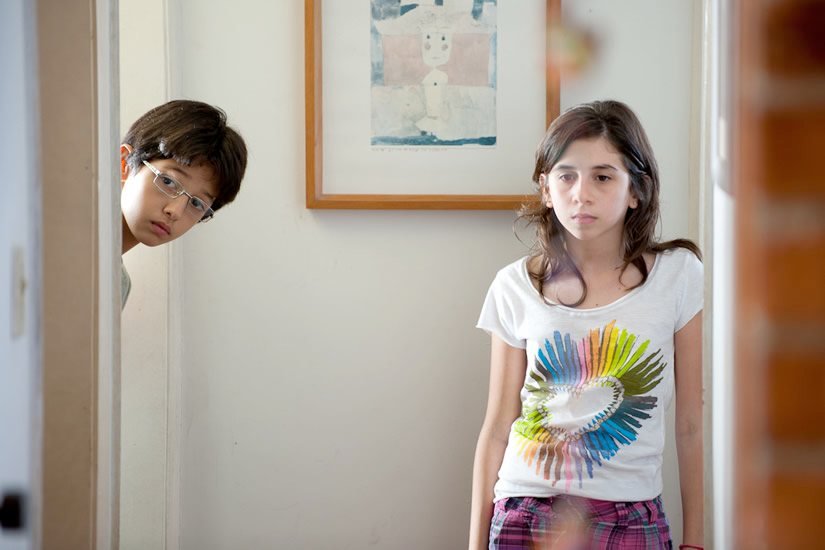
It relates to what you were saying about architecture – if everyone suddenly has the same visual signifiers maybe the wealthy feel a need to build fences to keep up the stratification.
Exactly. I’ve been flying over Recife a lot and it looks like a huge collection of spikes, the spikes on tall buildings. The upper classes believe the higher they are the safer they are. It’s silly because of course people can just take the elevator up 34 floors and rob you, which has happened many times. But there’s also this idea that the higher you are the better you are. That’s reflected in the way the city’s being built or rebuilt, the new city. It’s sick.
Interestingly in France, Britain or America high-rises are usually housing projects, whereas in Brazil they’re a sign of power and money. So the signs are all messed up, which is another idea I wanted to put in the film. The most powerful character, Francisco, the old man, lives very high up in a penthouse, like a king in a castle.
The darker-skinned the character, the lower their class in the film. How conscious were you of that in the casting?
That was actually very disturbing for me and my friends, and we discussed it at length. When we were casting it was like we were being racist, but in fact we were trying to be socially and racially true to what the reality is. But of course because we were making decisions and assigning roles literally it created a tension, and made us question what we were doing.
We wondered if it was time to turn things upside-down and have a blonde maid with blue eyes, but it would photograph wrong and feel phony. Engineering it for the film would be like including a flying car landing in the street.
Were the actors involved in this conversation?
Yes. Many scenes dramatise very subtle moments of racism, which is the kind of thing that happens in Brazil. Brazil has a very peculiar brand of racism. We don’t have racial hatred; no one is beaten up in the street because they are black. There have been incidents with homophobia, but I don’t think we have had this historically, not like in France.
So that was discussed, especially with Nivaldo Nascimento, who plays a security guard. It was quite disturbing because we were actually talking about the guy’s private life. He said the tension was very real – like the scene where he first meets Francisco, who doesn’t shake his hand or even greet him because he’s the black guy on the side.
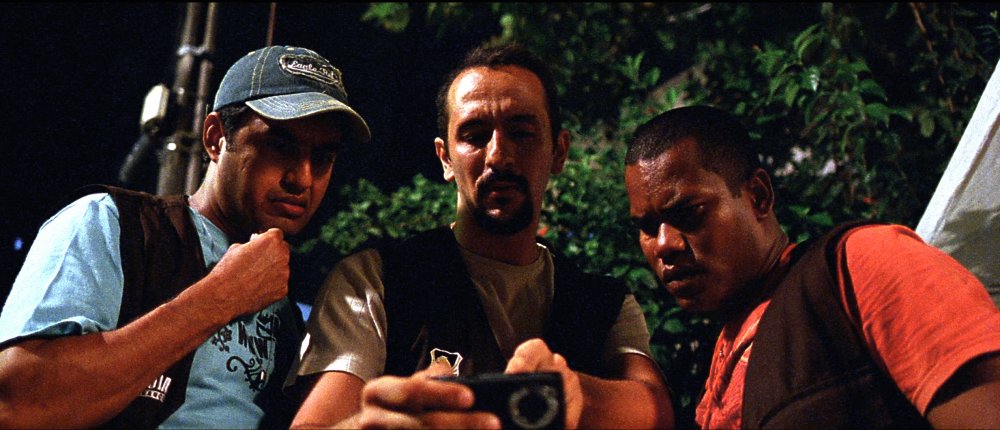
Let’s talk about the amazing sound design, which is instrumental in this sense of unnerving threat. We often think of cinema as frames of footage linked together, but the title suggests a kind of sonic chain. How did you come to work with the sound designer, and how did you develop this concept?
I worked with Paraguayan filmmaker Pablo Lamar, who spent a few years living in Recife. He’s always listening, a natural sound person. I’ve always loved working with sound too, and did the sound on all my short films. Slowly we invited more people until we had a nine-person crew, which is quite unusual for a small, low-budget Brazilian film. It took almost two years to [complete] the sound.
The main idea was that sound does not respect social barriers. In a room we can control the lights by using the shades, but if there’s a truck outside playing Led Zeppelin or some construction work we can’t get rid of it, it will come in. Because Brazil is a tropical country and everyone lives very close together the sounds overlap all the time. With a film, you can use sound to add more layers of life. You have to do it in a very careful and sensitive way. It shouldn’t draw too much attention.
We didn’t want to use a traditional music score. I have nothing against it – look at Bernard Hermann, he’s brilliant. But I always find it interesting as a viewer to watch scenes unfold without instructions on how they should be dealt with.
For example, the much talked-about masturbation scene with the washing machine – how should you react? Some people laugh, some are just incredulous, some cross their legs which is an interesting reaction. Is it funny, erotic, or scary? I don’t know, you come up with your own interpretation.
The absence of music generates something almost like a deal between me and the audience. You’re not going to get a soundtrack, but I can give you something like a carpet of sound. It will entertain your ears but you won’t really notice that it’s music with noise. But the noises are carefully laid out. Sometimes you can hear the dog barking, but it has to come at the right moment.
So it’s almost like a composition…
It is a composition. It was very organic and natural, and there are no rules for that – you just have to listen and understand the scene. For example the scene in which the neighbours are speaking while Bia’s smoking marijuana – it just felt right. Pablo’s own neighbour was having an argument with a boyfriend and he managed to record it just outside the window, almost like a peeping tom with sound. The voice was slightly distorted, so she can’t be recognised.
You’ve shown the film both at home and to festival audiences. I saw it in Rotterdam with a couple of Brazilians who wondered if foreign audiences would catch the references. What’s been your experience?
I feel completely comfortable with how the film has behaved, but when I was going to Rotterdam of course it was a big question mark. I’ve found that foreign audiences are more afraid of the film than Brazilians; you can almost read their body language watching. One scene is a very interesting example – a long shot where you see a pirated-DVD cart and two policemen. In the US this woman just assumed the policemen were going to arrest these guys for making too much noise, but any Brazilian will understand that they’re actually buying the pirated DVDs.




